Position is everything in poker. That is something that you will hear preached at all levels of skill and experience, from novices to world-class pros. The sooner that you understand, and more importantly, master, the intricacies of each position, the sooner your game will improve. For those who might ask, what is position in poker, we are breaking down the positions of the table, from early, to middle, to late position, and those in between.
EARLY POSITION
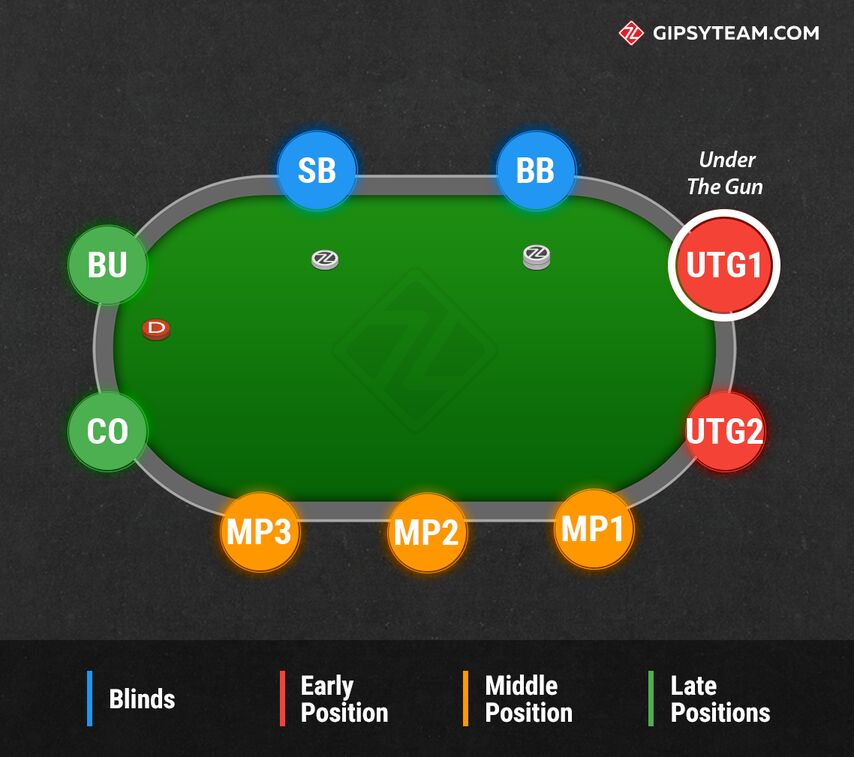
The first player to act preflop is “under the gun”, or UTG, because the action is on them right away. It is, mathematically, the worst position to raise from on the table, because everyone at the table can then react to your action. Additionally, you will likely be out of position post-flop, unless the blinds are the only players to call. With this being known, a raise under the gun is often considered a very strong move, one that can usually only be done by a medium to big pocket pair, or a big ace. All other hands are thought to be too weak to raise. The next two early positions at a full ring nine-handed table are often called “UTG+1 And UTG+2”. Every player is different of course, but generally, if someone raises from these positions, you should give them credit for big hands. There are some pros who will purposely raise with marginal hands in the earliest of positions, simply because of this dynamic of how strong it will be perceived.
MIDDLE POSITION
The middle position players of a nine-handed table are in somewhat of a no man’s land when it comes to preflop play. These positions are where some more experienced poker players will open up their range of raising hands, perhaps raising with a middle-suited connector or an average suited king or queen. You have fewer players to get through than the under-the-gun player, and will occasionally have position when the late-position players fold to the raise. Often times, more experienced players will lean towards calling with fairly big hands in middle position, hands like 88-JJ, Ace-Queen, and Ace-Jack, and they do this for a few reasons. They want to control the size of the pot, and reassess the situation with a pair after the flop to see if they hit a set. They could also call if they know that an aggressive player is likely to raise in position behind, aka a squeeze play. A squeeze is when a player puts in a three-bet over a raise and a call. It’s often thought that if you can get the original raiser to fold, the caller will often fold as well, giving you the pot uncontested. Some players will take advantage of this dynamic, calling in middle position with monster hands, then reraising over the top after disguising the strength of their hand. This is a great way to exploit the tendencies at your table, especially if you know that a particular player is keen on playing more aggressively when they have position.
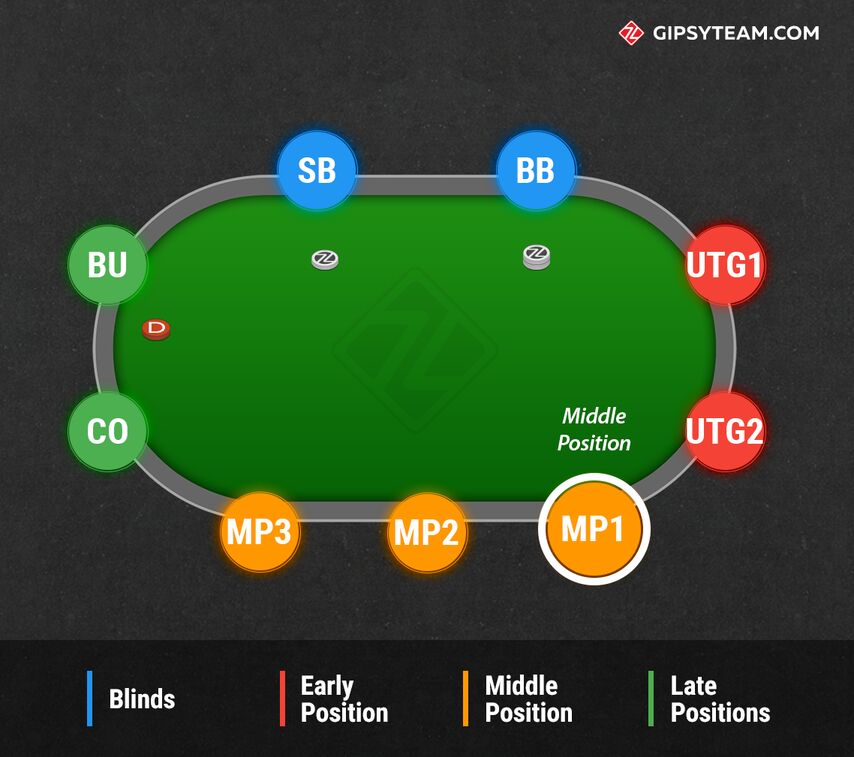
The chart below will give you a visual aid on what hands can be raised from early, middle, and late positions.
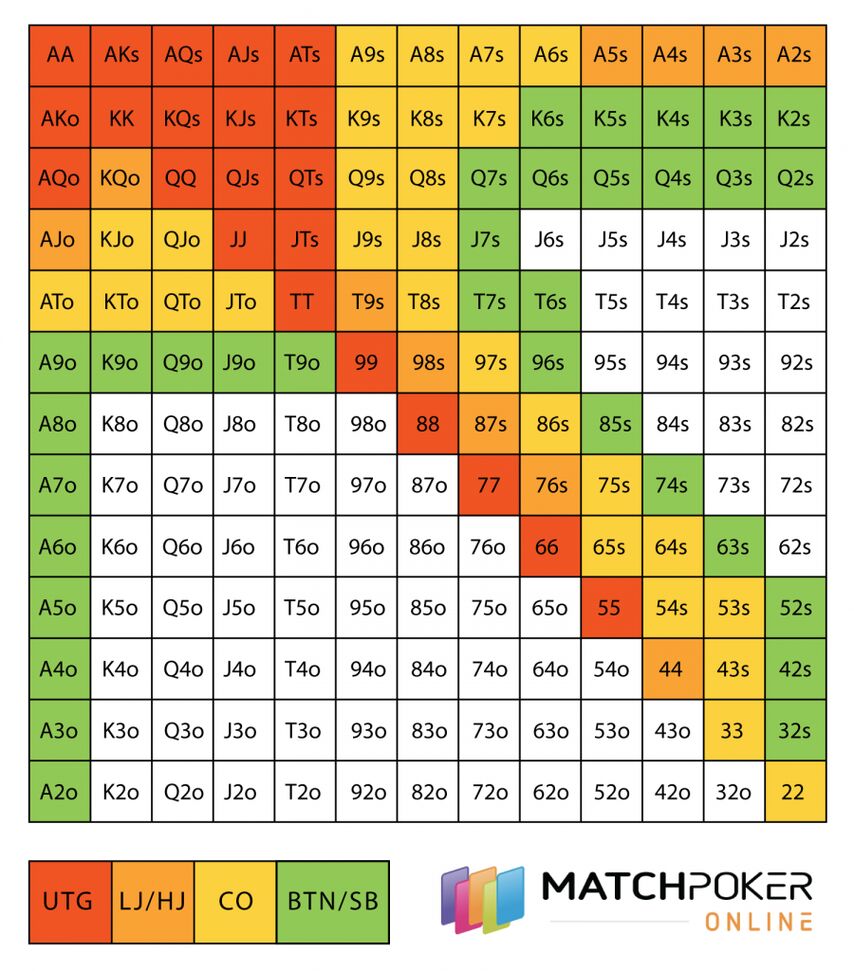
LATE POSITION
The names of the final three positions on a poker table are the hijack, cutoff, and button. The button has the most power post-flop, because they will always be the last player to act. This will often make the big difference for players when deciding whether to go for max value, thin value, or to go for that big bluff that can often be the difference maker in a tournament or cash game pot. The cutoff is the position right before the button, aptly named because they can often raise light to try and get the button to fold, taking over the latest position postflop as a result. Hijack is named for a similar reason. There are some players who refuse to ever fold the button, knowing how powerful it is after the flop has come. Simply put, you should become quite comfortable playing a variety of hands from positions like the cutoff and button. So often, your actual holdings don’t even matter, your ability to react to what your opponent matters more. This is what makes the late positions seen below so powerful. Certain heads-up specialists have a rule that they will either raise 100% of the hands they have the button with, or at least limp and call any raise, simply because they are so confident in their play on the button.
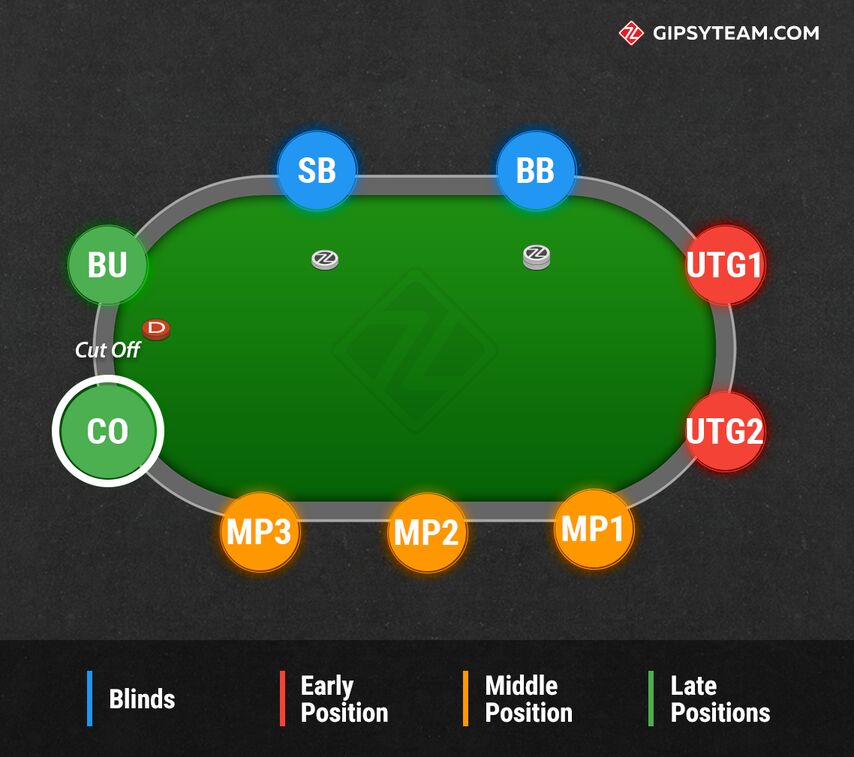
THE BLINDS
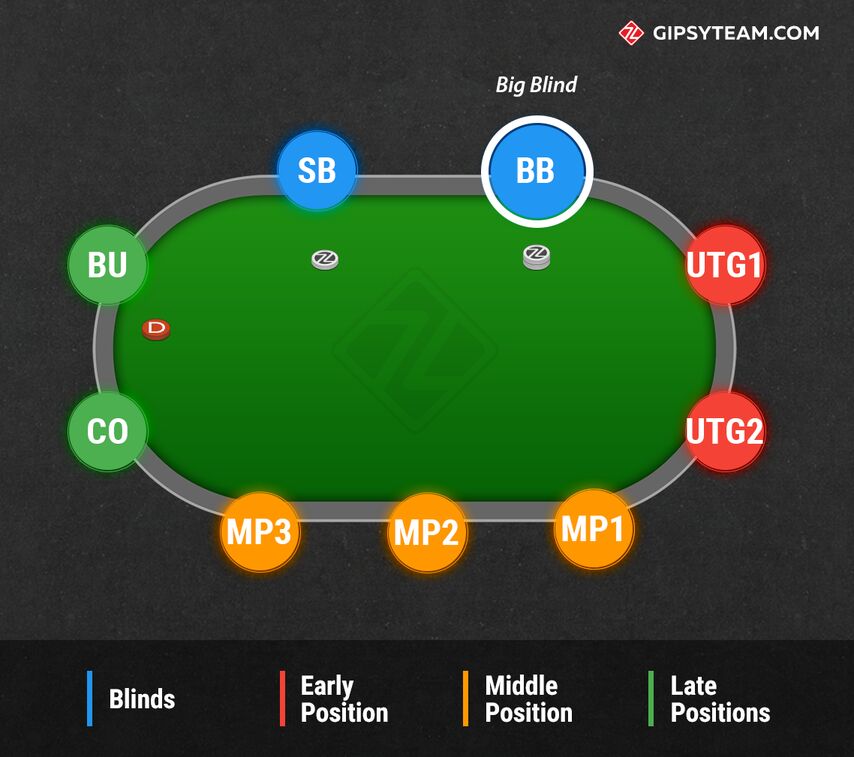
The last players to act preflop, incidentally, are always the first players to act post flop. In games like No-Limit Hold’em and Pot Limit Omaha, the blinds get their names because they are the two players who are forced to put extra money into the pot. There is the small blind and the big blind, and traditionally, the small blind is half of the bet made by the big blind. Many players like to get stubborn in the blinds, often feeling they need to defend their troops, aka their chips already in the pot. This, of course, has its positives and its negatives. More experienced poker players will be able to navigate the hand whether they miss the flop or hit it, and often, a player can smash a flop with a low hand like 5-3 suited if the flop brings two fives or two threes. However, more often than not, you will find yourself check folding from the blinds, simply because you won’t have position for the entire hand, which is oh so important.
As with everything in poker, these strategies should be used as general guidelines more than hard set rules, as every table of players is different. But adding these dynamics, and combining them with learned experience from hands, is certain to drastically improve your game, especially if you are playing on 888poker. Sign up for an account with 888poker and head over to the casino section. You can get $20 for free without depositing and a matched bonus of 120% (up to $500).













